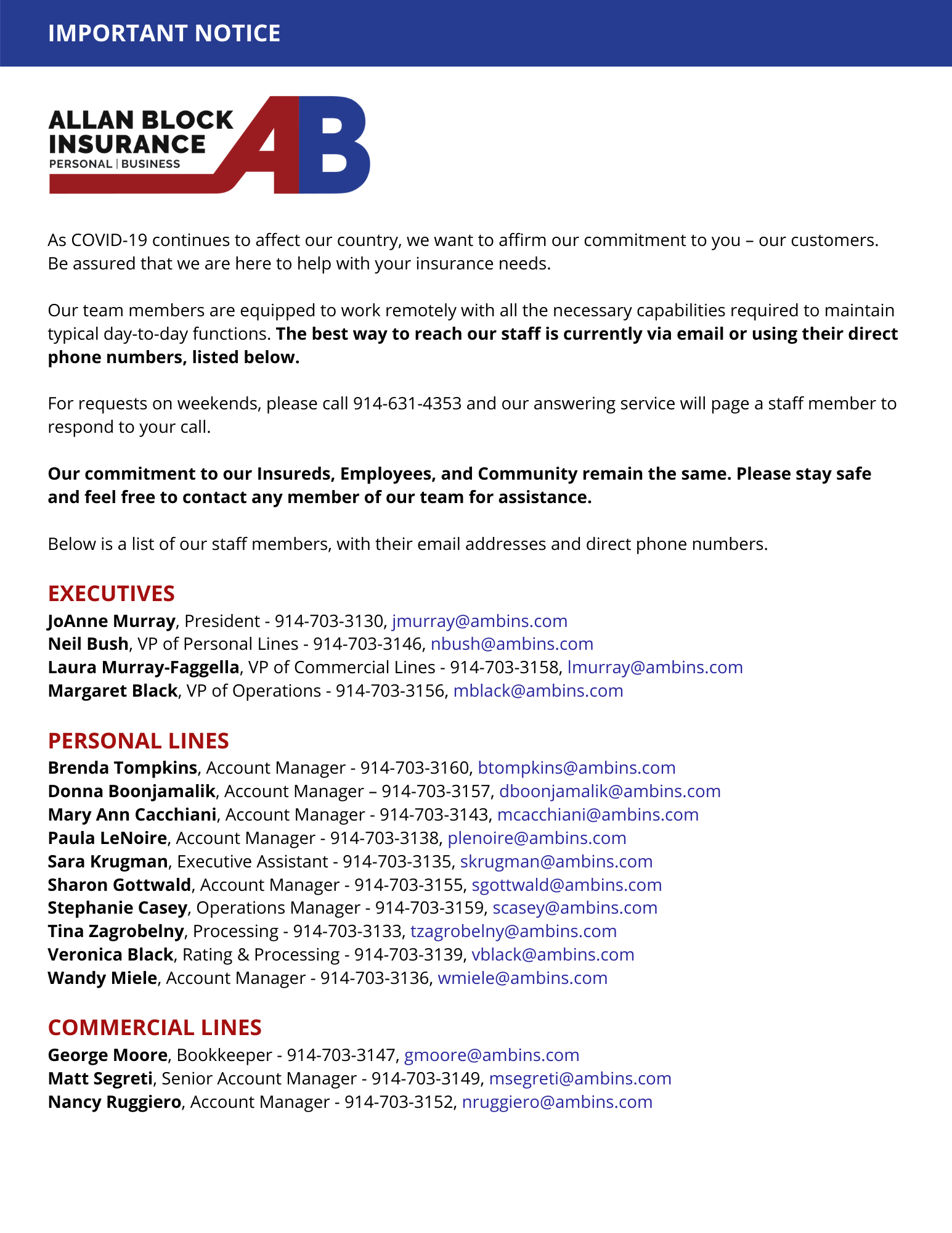If you’re rolling your eyes at the thought of more auto insurance literature, you’re not alone. Some nights it seems like 5 of every 7 commercials are about auto insurance. Factor in the ads on buses and trains and in newspapers and online, and it might feel like you’re being inundated with too many options.
Along with the myriad of carriers come a myriad of gimmicks, which lead me to ask the following questions. Fifteen minutes… do you want it done fast or done right? Accidents forgiven… so you’re paying more up front to cover this “forgiveness”? Name your price… but what are you getting for that price?
That last counterpoint, by the way, is the main point of this article. What ARE you getting for your money?
With personal auto insurance being required by law in 48 states, many carriers have taken the approach of “this will be unpleasant, so let’s make it fast and easy.” This is great if you never have an accident, but if you actually need to use your coverage you might be in for an unpleasant surprise. However, with the cost of everything from exhaust pipes to attorney fees increasing, now is as good a time as any to review your policy and see just how “fully covered” you are. Let’s review your core coverages together.
First and foremost, you have your personal liability coverage, an important coverage necessity in those states that require auto insurance. Liability coverage responds to Bodily Injury lawsuits, and also pays claims for property you’ve damaged during a crash – anything from another vehicle to a guardrail on the highway. Your coverage is usually written in a series of three numbers, for example the minimum liability coverage required by New York State is $25,000/$50,000/$10,000, meaning $25,000 Bodily injury per person, $50,000 Bodily Injury per accident, and $10,000 for property damage.
You’re probably thinking, “This isn’t much coverage at all!” And you’re right. If you’re able to afford more coverage, we absolutely recommend it. Your personal assets are at stake here, including your family’s home. If you have state-minimum coverage and have a claim against you that exceeds your policy limits, they can and will go after your other assets. I’ve always advised customers to take the highest coverage they can comfortably afford. If you own a home and still carry less than $250,000/$500,000 for Bodily Injury, let’s just say I hope you never need the coverage you do have.
But what happens when someone else hits your car and they don’t have enough coverage? If you were injured, and your state (like New York) requires Uninsured/Underinsured Motorist coverage, you might not be out of luck. Your policy can respond to make up the difference, with coverage per person and per occurrence. Some states have an uninsured motorist limit for property damage too, but here in New York, those losses are covered by your own Collision coverage.
Collision is part of the Physical Damage section of your policy. Along with Comprehensive (or Other-Than-Collision / OTC), these are the coverages that help to repair your car after an accident. The easiest way to tell the two apart is that a collision is hitting another vehicle or a fixed object (like a fence or a pothole). Anything else that happens to your car falls under the banner of Comprehensive. While you’re reviewing your policy, be sure to check on how your carrier pays for losses: Actual Cash Value vs. Replacement Cost, as this could be a difference of hundreds of dollars. You usually can’t change it, but knowing allows you to prepare accordingly. Your company probably also offers coverage for towing and rental reimbursement. It’s important to remember that this rental coverage only applies if your vehicle was involved in a covered loss. You can still rent a car while you’re on vacation, your carrier just isn’t going to reimburse you for the cost to rent the car.
Finally, we have coverage for your own injuries. Your policy has a coverage called Medical Payments, which pays for medical bills and things like x-rays that are needed after an accident. Here in New York (and in a few other states) we have a required coverage called Personal Injury Protection (PIP) and sometimes referred to as “No Fault” because it will pay for medical costs, and other related expenses like lost wages and transportation expenses, for up to two years, regardless of who is at fault. Your PIP coverage can even cover you if you are a pedestrian and are hit by a car. New York State only requires you to carry $50,000 in PIP but additional amounts are often available at relatively low prices. Don’t cheat yourself, being cheap in the beginning usually turns out to be very expensive in the end.
This may not have been a quick overview, but I’m sure it was relatively painless – and I’d bet that brushing up on your insurance knowledge to be a better-informed customer still took less than fifteen minutes. Still unsure if your auto insurance has enough coverage? Give us a call today.



